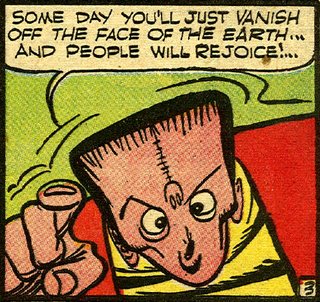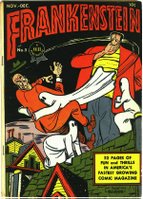:)
The sequence begins about 23:20 into the podcast that you can find linked at the bottom (under Update) of this post. The rest of the panel is interesting as well, which is why I stumbled on the mention of the blog--I was still listening 23 minutes in. I have listened to a few episodes of Comic Geek Speak, and from the discussion I should listen to more. And I would certainly be remiss if I didn't mention Bill's most recent podcast on Marvel Comics #1 and the 70th Anniversary of the Timely/Atlas/Marvel colossus. If you've never listened to one of Bill's podcasts, they're a terrific half-hour discussion of some of the great comics of the Golden Age, and perfect for your IPOD or MP3 player.
Thanks for the shout out, Bill!
Update: So I decided to download and listen to the Silver Age Batman episode of Comic Geek Speak, and Silver Age Comics got another mention in that episode as well! I'm famous!




























































